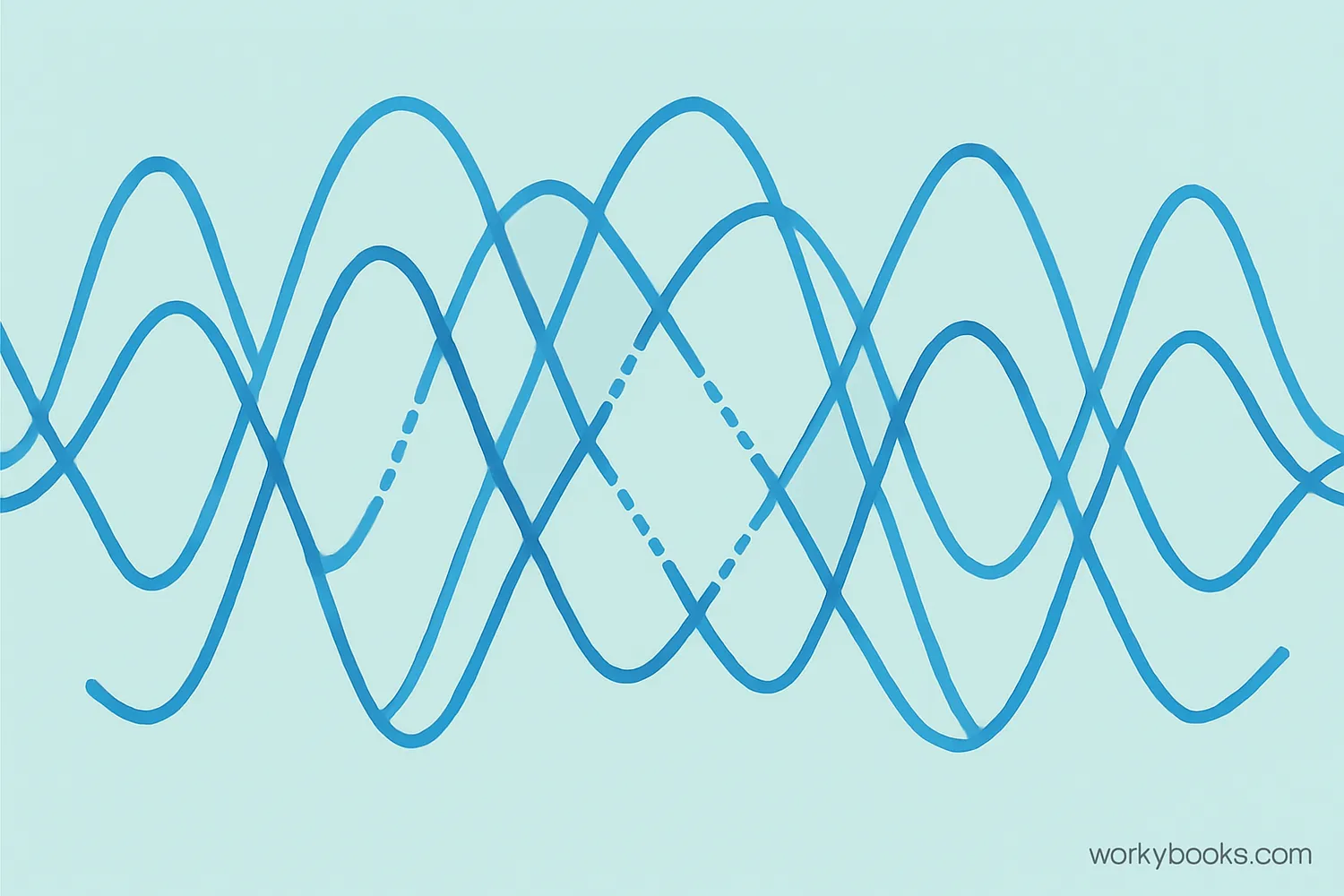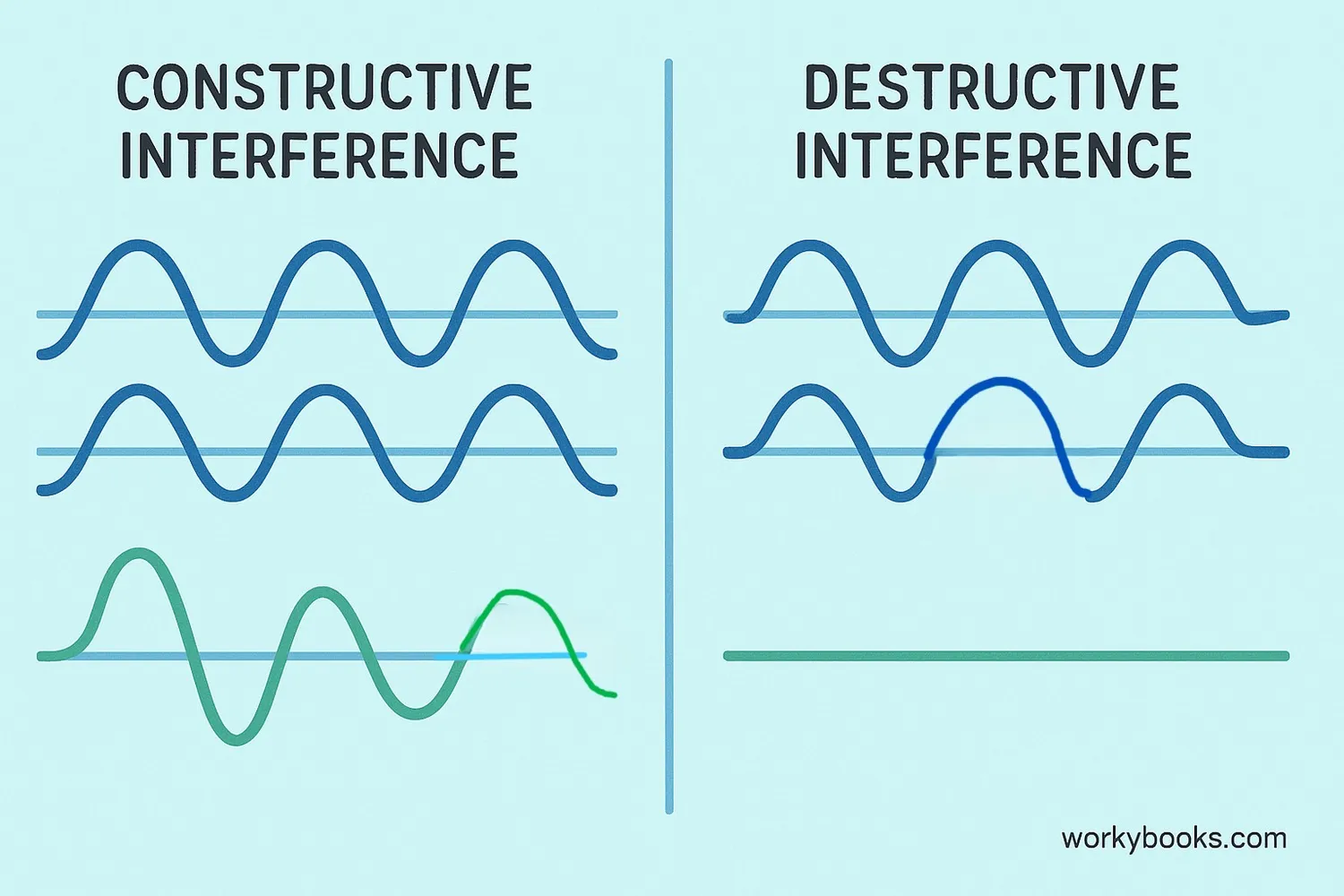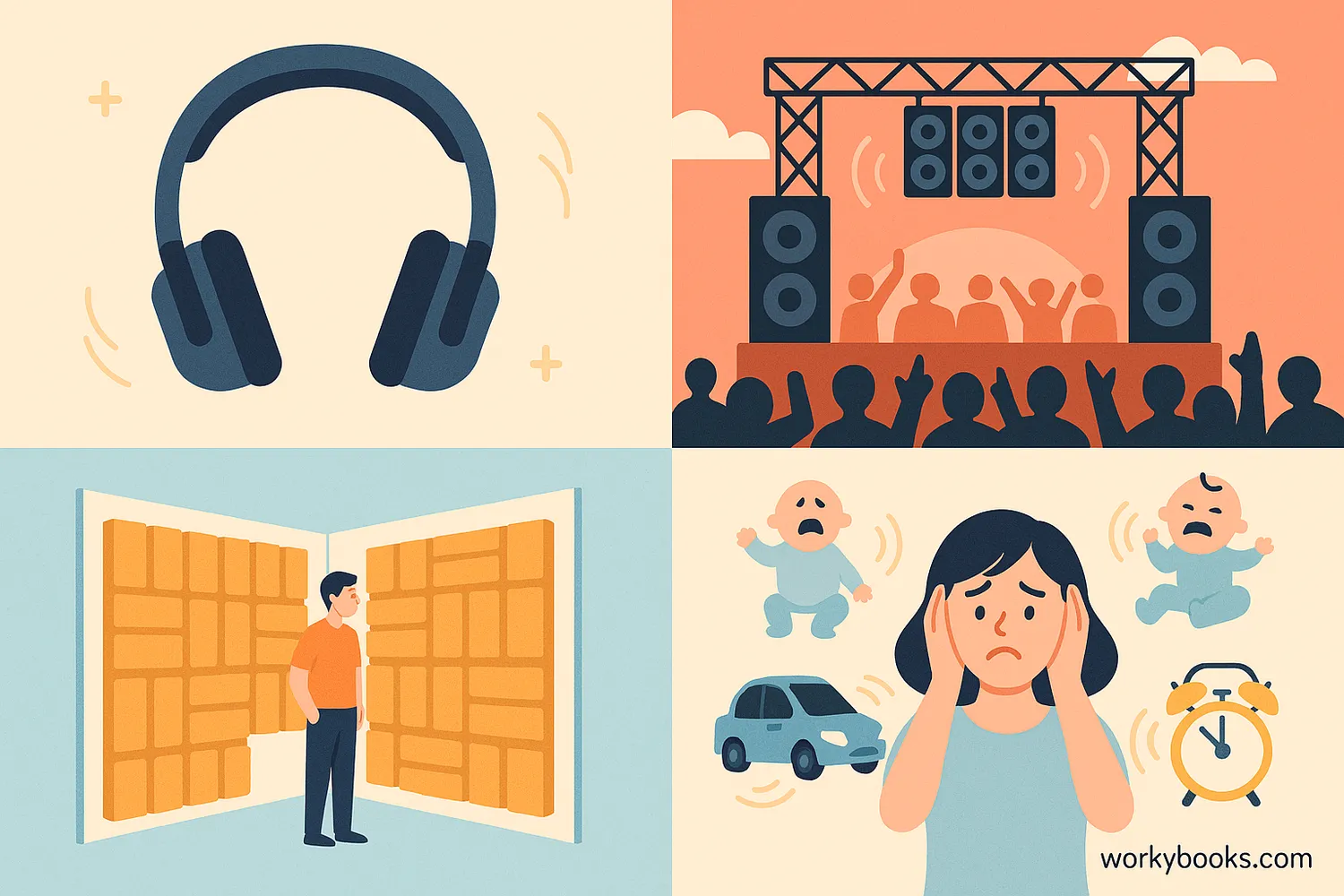Sound Interference - Definition, Examples, Quiz, FAQ, Trivia
Discover how sound waves interact and create patterns through interference!
What is Sound Interference?

Sound interference happens when two or more sound waves meet and combine with each other. This creates a new sound pattern that can be louder, softer, or completely different from the original sounds!
Think of sound waves like ripples in a pond. When two ripples meet, they can combine to make a bigger wave or cancel each other out. Sound waves behave in the same way, creating interesting patterns that we can hear and measure.
Wave Superposition
The scientific principle behind interference is called superposition. This means when waves meet, the resulting wave is the sum of all the individual waves at each point.
Types of Sound Interference

There are two main types of sound interference that occur when waves meet:
Constructive Interference
When sound waves combine to create a louder sound
Destructive Interference
When sound waves combine to create a softer sound or silence
In constructive interference, the peaks of one wave line up with the peaks of another wave, making the combined wave bigger and creating a louder sound.
In destructive interference, the peaks of one wave line up with the valleys of another wave, canceling each other out and creating a softer sound or even silence.
Noise-Canceling Technology
Noise-canceling headphones use destructive interference! They create sound waves that are exactly opposite to background noise, canceling it out so you hear less noise.
Real-World Examples of Sound Interference

Sound interference isn't just a science concept—it affects our daily lives in many ways:
Noise-Canceling Headphones
Use destructive interference to cancel out unwanted background noise
Musical Instruments
Produce rich sounds through constructive interference of harmonics
Concert Hall Design
Architects design spaces to manage sound interference for better acoustics
Other examples include:
• Echoes in large spaces caused by sound waves reflecting and interfering
• Beats heard when two similar frequencies interfere with each other
• Speaker systems designed to prevent destructive interference
• Ultrasound imaging used in medicine that relies on wave interference
Sound Interference Quiz
Test your knowledge about sound interference with this quiz. Answer all 5 questions to see how much you've learned.
Frequently Asked Questions
Here are answers to some common questions about sound interference:
Interesting Sound Facts
Discover some fascinating facts about sound and interference!
Animal Hearing
Dolphins use sound interference patterns in their echolocation to detect incredibly small objects. Their sophisticated sonar can distinguish between different types of fish based on the interference patterns of returning sound waves!
Concert Technology
Sound engineers at concerts carefully position speakers to prevent destructive interference that would create "dead spots" where certain frequencies can't be heard. This ensures everyone in the audience experiences the full sound.
Medical Ultrasound
Medical ultrasound imaging uses sound wave interference patterns to create detailed images of inside the body. By analyzing how sound waves interfere after passing through tissue, computers can construct images of organs and babies in the womb.
Quantum Sound
Scientists are exploring "quantum sound" where individual particles of sound (called phonons) can interfere with each other, similar to how light particles (photons) behave. This could lead to new technologies in quantum computing!


